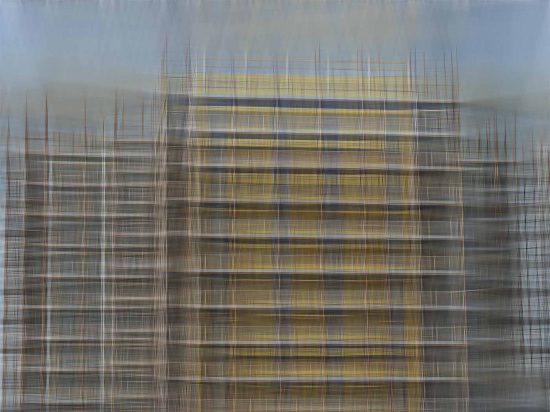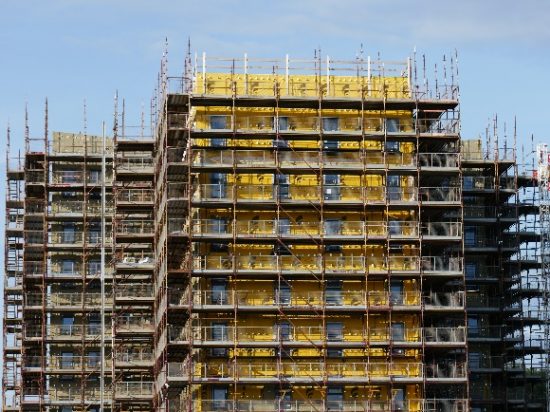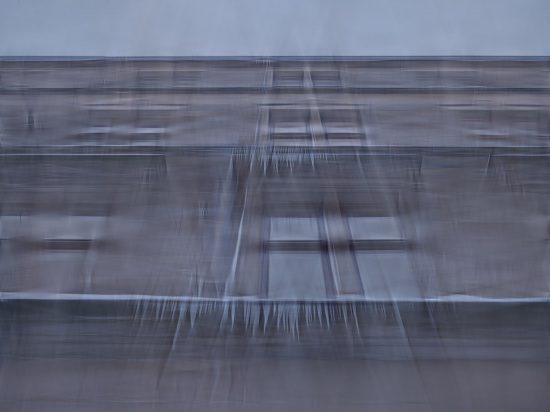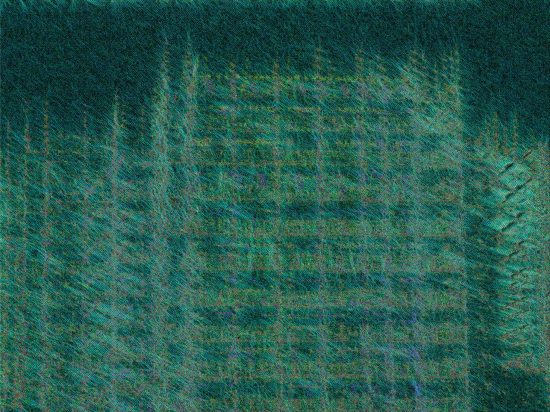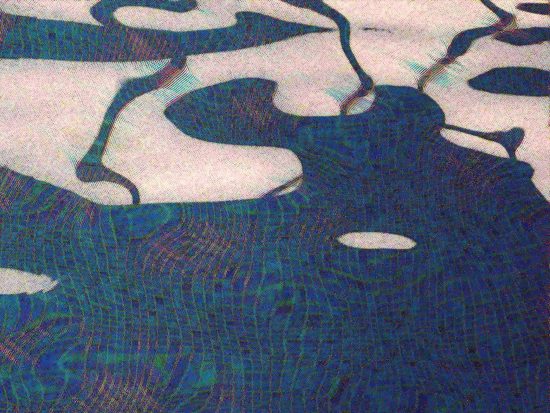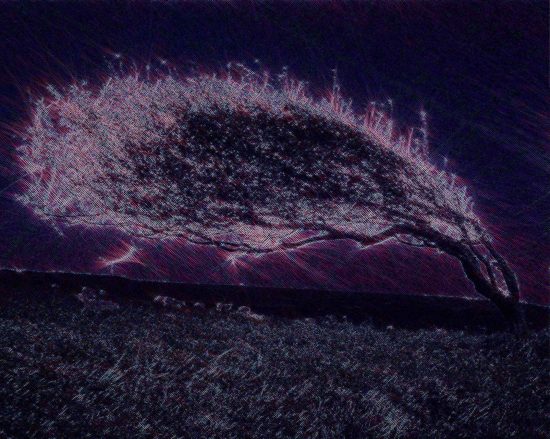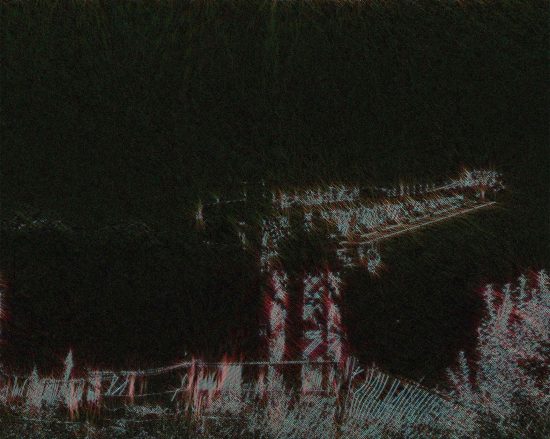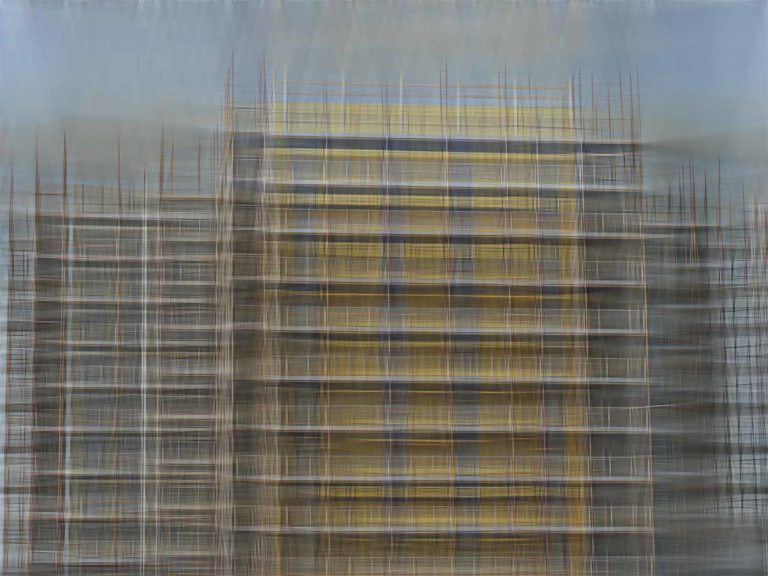
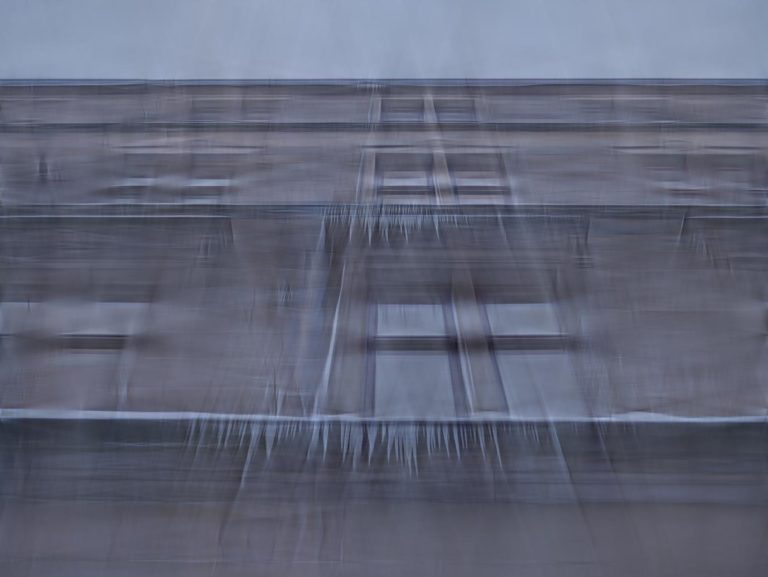
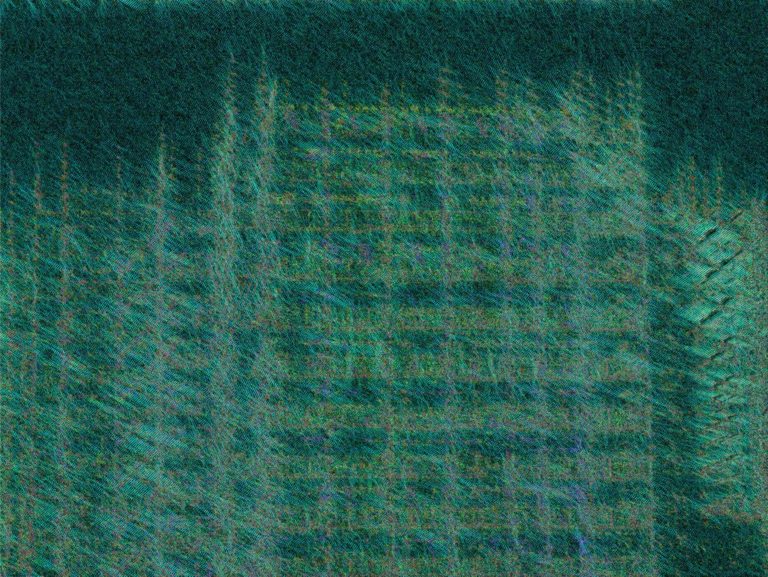
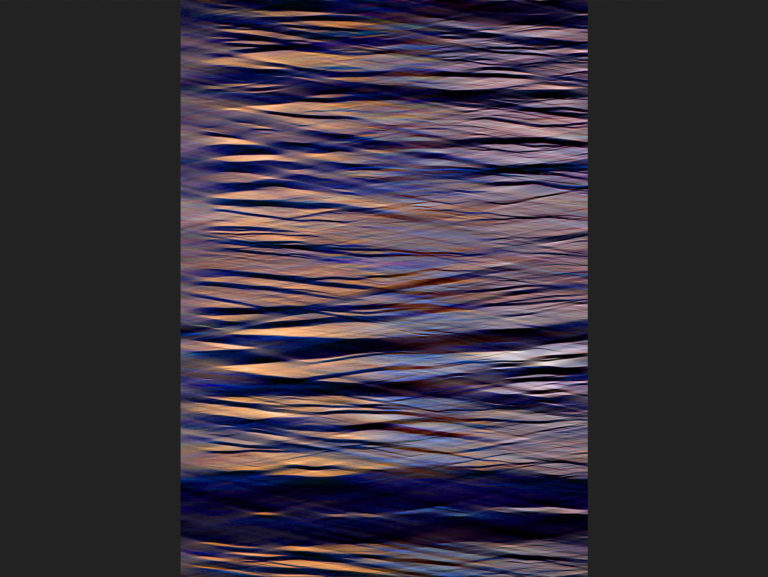
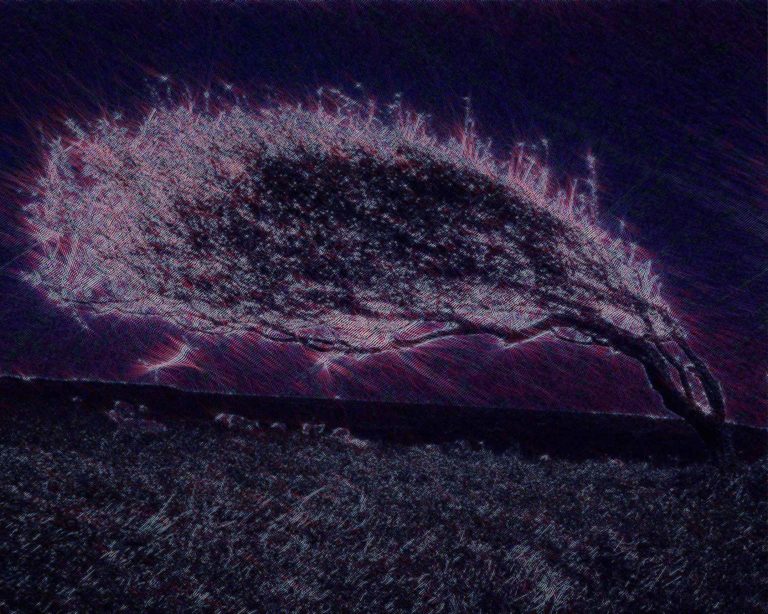
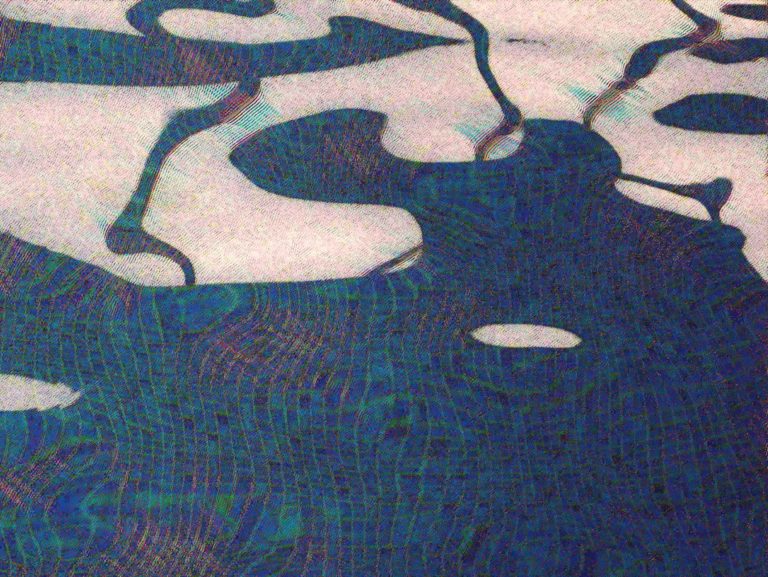
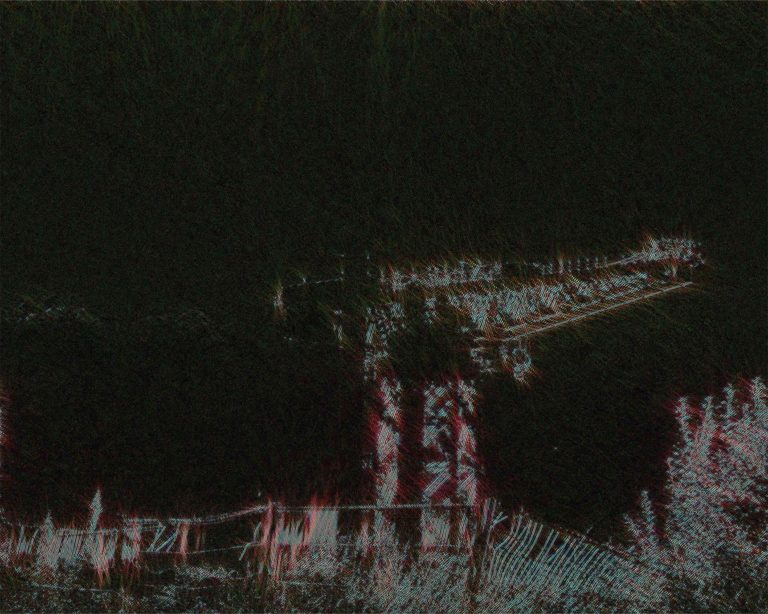
When you look at the world around you it seems like a solid, stable image in which you can easily make out different objects. However, this perceived image is nothing like the real world. There are so many different colours, fine textures, coarse textures, dark areas, light areas, objects standing in front of each other… if you think about it, it is actually amazing that we can make sense of it at all. Our eyes and brain have to do a lot of work to interpret everything and to chuck out information we don’t need, otherwise it’s just too much and too confusing.
In this work I demonstrate how little information we need to still make sense of a photo.
The image on the left (or above on a mobile) contains only 11% of the information from the original photo shown below. However, you were probably still able to make out what it is, even though the photo is almost reduced to a tartan-like pattern.
This is the original photo from a building under construction taken in Glasgow (2017). You will immediately notice that the image mostly contains horizontal and vertical lines.
Your brain does something similar to what I have done with the image above. If you’re passing this building without paying too much attention to it, your brain uses mainly the horizontal and vertical characteristics to tell you: “it’s a yellow-ish building under construction, that’s all you need to know, let’s focus on more important things.”
In the image on the left (or the top image on a mobile) I have modified the photo on the right (bottom on mobile) in a similar way, only now I kept 17% of the information to also include somewhat more diagonal characteristics of the photo. As a result the icicles are jumping out really clearly, as well as the middle windows.
If you would like to learn more about how I made these images, on the Geeky page I go into a little more detail (but not too much) about the maths behind it.

